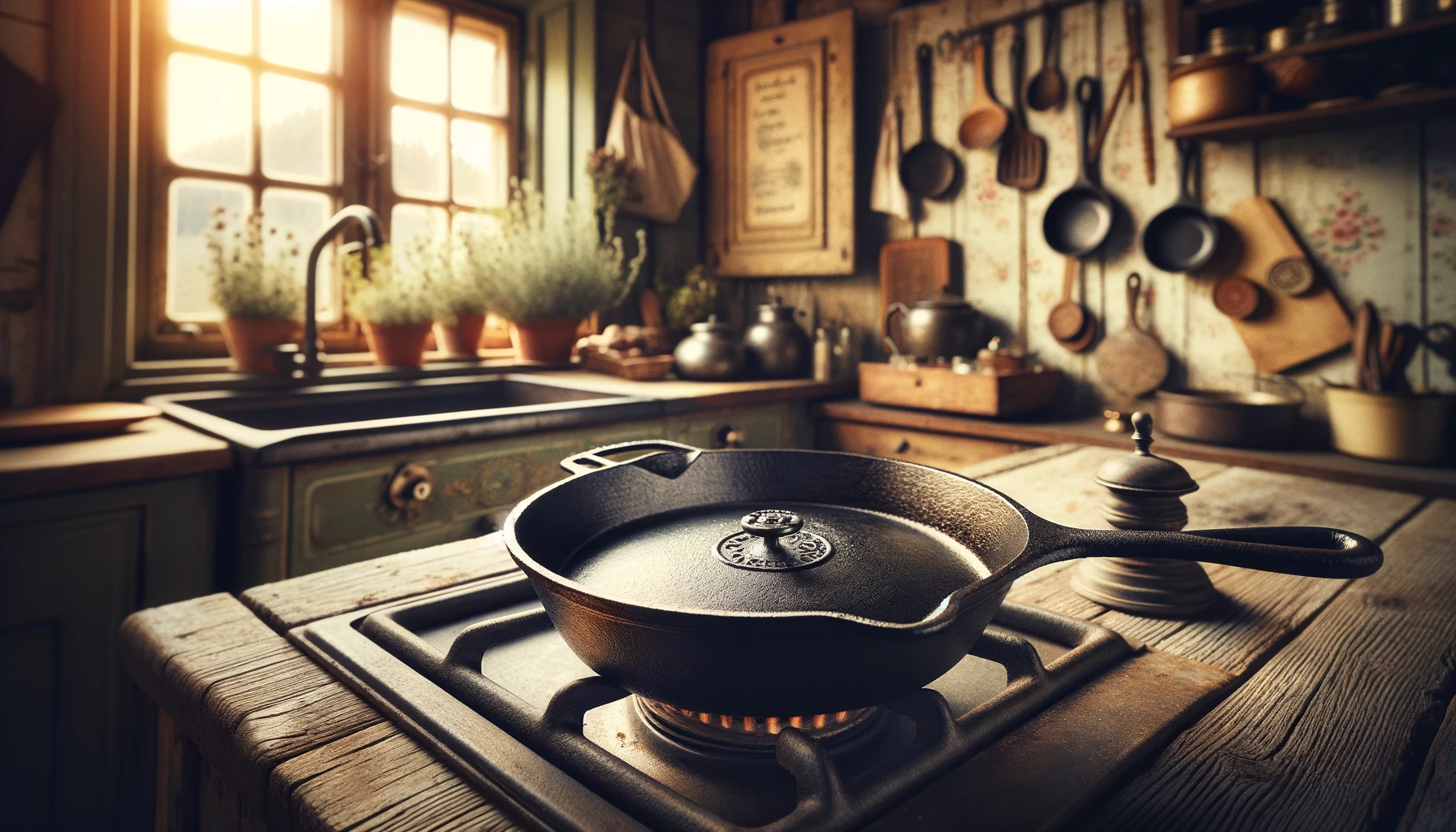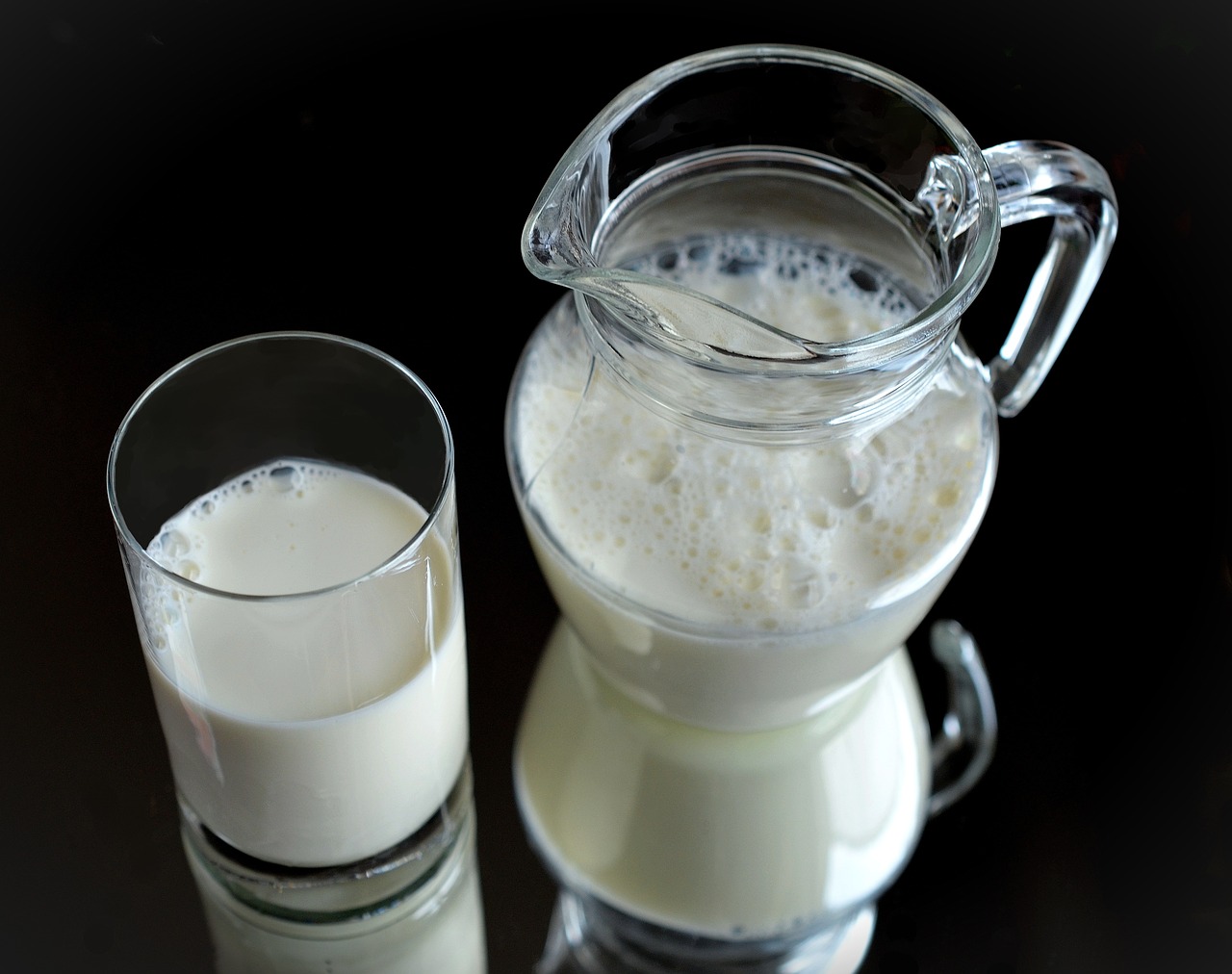The noble cast iron skillet – that hefty hunk of metal that your grandparents swore by, which you probably received as a hand-me-down because nobody in the right mind would buy something so demanding if they knew better. You know, the one that’s currently rusting away on your stovetop because you thought ‘seasoning’ was just something you did to chicken. Fear not, intrepid home chef, for I shall guide you through the mystical art of cast iron skillet cleansing without a single drop of dish soap – because, as the ancient skillet sages decree, soap is the arch-nemesis of the almighty seasoning layer.
First, a primer on this ‘seasoning’ business, since it’s crucial to your pan’s existence – and yours, if you value your skillet-toting granny’s approval. Seasoning isn’t just a flavor enhancer; it’s a cherished polymerized layer of fat that is as important to your skillet as your ego is to your Instagram profile. This slick, protective coating is what makes your skillet non-stick (a term that is as misleading in cast iron circles as ‘low-calorie’ on a fast-food menu).
The Cleaning Part
Now, onto the sacrilege that is cleaning. After you’ve seared, sautéed, or charred your food to perfection, you’ll notice your skillet looks like it’s been through the wars. Fear not – this is normal. What’s not normal is tossing it into the sink full of soapy water (gasp!), unless you want the cast iron gods to smite you where you stand.
Step 1: The Cool Down
Let your skillet cool off after the fiery inferno of cooking – because dunking a hot skillet into water is like jumping into a snowbank after a sauna: a shocking experience that no one asked for, leading to a crack. Literally.
Step 2: The Weird Stuff
Now it’s time to give your skillet a good meal. Yes, you heard that right. Feed it some salt – kosher salt, because your skillet is a gourmet tool that demands respect. Sprinkle a generous amount of salt while the pan is still warm, not hot enough to double as the gates of Mordor but warm enough that you can’t hold it for long.
Step 3: The Scrub
Then, take a paper towel, ball it up, and pretend it’s a scrubber in a medieval RPG – you’re now going to scrub the pan with vigor, as though you’re polishing a magic lamp, except you won’t get any wishes granted unless your wish is to remove stuck-on food bits. This abrasive action, with the salt serving as a gentle exfoliant, will scrape away any food residue without compromising your skillet’s prized seasoning.
Step 4: The Spa
Once you’ve thoroughly exfoliated your skillet, discard the salt like it’s last year’s fashion trend. If your skillet is still sporting gunk like a toddler wears their spaghetti dinner, it’s time for the spa treatment. Pour some water into the skillet – yes, water – and put it back on the stove. Heat it up until it’s simmering like your anger when someone says they prefer non-stick pans. This is like a sauna for your skillet, opening up its pores (read: food particles) and making it easier to clean.
Now that the skillet’s pores are wide open, evict the food bits with a spatula. Wood or silicone, please – we’re not barbarians. Metal spatula is to a cast iron skillet as a hammer is to a smartphone screen. Once you’ve exercised the debris, pour out the dirty spa water. Your skillet should now be looking cleaner than a germaphobe’s doorknob.
Step 5: Extra Rub
As you continue this pilgrimage, you’ll encounter new trials and tribulations. For instance, you might find yourself staring at a skillet with bits so stubborn, they seem to mock your very existence. Should such a calamity strike, you might be tempted to reach for the soap. Stop right there. Put the soap down. Walk away. You can combat these culinary cling-ons with something far more powerful – a chainmail scrubber. Yes, it’s medieval, and yes, it’s like armor for your hands. Chainmail scrubber is designed specifically for cast iron care. Its rings glide over the skillet’s surface, whisking away food particles without disturbing the sacred seasoning. It’s like a massage for your skillet – tough on the muck, soft on the seal.
Scrub with the confidence of a knight in shining apron, and watch as the remnants of meals past retreat in defeat. Then simply rinse the pan.
Step 6: The Dry Off
But you’re not done yet. It’s time to dry your skillet. Water is the arch-nemesis of cast iron. It causes rust faster than you can say “oxidation,” which is the supervillain backstory of every neglected skillet. So, dry that skillet thoroughly with a towel. Then, heat it on the stove for a few minutes to banish every last drop of moisture. Take this moment to reflect on the fact that you’re literally watching metal dry.
Step 7: The Oil Rub
After all this, you might think you’re finished. Ha! Now comes the preservation of the sacred seasoning. You’ll need an oil – a neutral one with a high smoke point. Think canola, vegetable, or flaxseed if you’re feeling fancy. Rub a thin layer all over the skillet – yes, inside and out, as though you’re applying sunscreen to a toddler – sparingly, and with care not to miss a spot.
Step 8: The Final Heat
Now, let your skillet sunbathe in a warm oven for a bit, or just leave it on the stovetop if you’re feeling lazy. This is like setting hairspray on a perfect hairstyle – it seals in the moisture and prepares it for its next performance.
The Maintenance Part
So, now that your skillet is as spotless as a monk’s moral compass, let’s talk about the long con: maintenance. Because what’s the point of giving your skillet the spa day of its life if you’re just going to let it go back to being a crusty mess? That’s like getting a haircut and then never showering again. Sure, you saved the hair, but at what cost?
The Storage
Do not – I repeat, do not – just shove your skillet in a cabinet, piled under a mountain of other kitchen gadgets, where it will emerge scratched and scarred like it just went through a culinary battle royale. Nay, store your skillet with the reverence it deserves. Hang it up or place it on a pedestal, preferably in a spot where it can bask in the admiration of all who pass by. Let it whisper the tales of your kitchen victories to every pot, pan, and spoon within earshot.
The Rust
Now let’s talk about the unspeakable – rust. The horror, the horror! Should you, in a moment of weakness, leave your skillet damp and wake to find it has succumbed to the ferrous fiend, do not despair. All is not lost. With steel wool, elbow grease, and a tear for the fallen, you can resurrect your skillet. Scrub the rust away as if you’re exorcising a demon. Once the skillet is free from its rusty chains, you must re-season it – coat it with oil and bake it in the oven, upside down, like a bat, at a high temperature (350°F (180°C) for an hour) to reforge the protective layer. It’s a skillet’s equivalent of a phoenix rising from the ashes – or, in this case, the oven.
The Regular Check-Ups
Now, I know what you’re thinking: “I’ve done all this work, surely I’m off the hook now?” Ha! That’s adorable. You’ve got to keep an eye on your skillet, like it’s a suspicious mole. Regularly inspect it for any signs of rust or wear, because the second you let your guard down, it’ll seize the opportunity to return to its natural state of decay.
The Re-Seasoning
Yes, there’s more. Occasionally, you’ll need to re-season your skillet. This is like renewing your vows but with an inanimate object. It’s you saying, “I still choose you,” as you bake on another layer of polymerized fat. It’s romantic, in a greasy, kitchen sort of way.
The No-No’s
There are certain things you mustn’t do to your skillet. No dishwashers. No soaking. No cooking acidic foods until your skillet’s seasoning is like the armor of a medieval knight. And please, no soap, unless it’s a light touch of a mild one, and you’re feeling dangerous. It’s the equivalent of feeding your pet gremlin after midnight. Just…why would you risk it?
The Legacy
Finally, remember that this isn’t just a pan. It’s a legacy. With proper care, your skillet will outlive you and probably your next of kin. It’s like a family name, but instead of passing on wealth or a good reputation, you’re passing on a superb cooking surface.
So, there you have it. An overly detailed, slightly neurotic guide to keeping your cast iron skillet less like a rusty old nail and more like the Excalibur of kitchenware. Follow these steps, and not only will your food taste better, but you’ll also develop an emotional bond with a piece of metal. And isn’t that what cooking is all about?
Pro Tips to Keep Your Skillet in Top Shape
- Cast Iron’s Kryptonite: The Dishwasher
For the love of all that’s non-stick, never let your cast iron skillet cross the threshold of a dishwasher. The harsh chemicals and soaking can strip away its seasoning and invite rust like ants to a picnic.
- Emergency Resuscitation: The Oven Method
If your skillet has been through the wringer and is starting to stick, give it an emergency re-seasoning. Coat it lightly with oil and let it bake, upside down, in a 350°F (180°C) oven for an hour. It’s like sending your skillet to a wellness retreat.
- The Oil Chronicles: Choosing Your Potion
Not all oils are created equal in the eyes of your skillet. Flaxseed oil is the holy grail for seasoning, but if you’re out, canola, vegetable, or shortening can serve as noble substitutes.
- Tattoo Your Skillet: The Seasoning Buildup
Think of seasoning as your skillet’s tattoo – it tells a story. Every meal adds a layer, creating a rich history. Embrace the uneven spots as they form; they’re character, not imperfections.
- Sticky Situations: Avoiding Acidic Foods
Early in your skillet’s life, avoid cooking acidic foods like tomatoes or lemons for long periods. They can wage war on the seasoning you’ve worked so hard to build. Short stints are fine; just don’t let them set up camp.
- The Spice of Life: Cooking Variety
Mix up what you cook. A varied menu ensures a robust seasoning. Go from cornbread to chicken and back to pancakes. Variety isn’t just the spice of life; it’s the spice of seasoning.
- Battle Scars: Scratch and Dent
If you’ve got scratches or small rust spots, don’t panic. Use a little steel wool to buff it out gently, then wash, dry, and oil up. Your skillet doesn’t need to be flawless, just loved.
- Pre-Game Warmup: Preheating Is Key
Always preheat your skillet slowly before ramping up the heat. This minimizes the risk of warping and maintains an even cooking surface, perfect for that golden-brown crust we all crave.
- The Non-Stick Secret: The Heat & Oil Tango
For an extra non-stick surface, heat the skillet and then apply your cooking oil. It’s like a quick spa treatment for your pan before the main event.
- The Legacy Lives On: Pass It Down
Treat your cast iron skillet not just as cookware, but as an heirloom. With proper care, it can last generations. Imagine the stories it could tell, from your legendary cornbread to the future pancakes of your great-grandchildren.
Frequently Asked Questions About Cast Iron Skillets
Soap? On cast iron? Cue the gasps and clutching of pearls! But fear not, modern soaps are not the villains they once were to cast iron. A little soap won’t strip your skillet’s well-earned seasoning. Just don’t go overboard – think of it as a light seasoning cologne, not a bath in cologne.
You can, but whether you should is a different kettle of fish… or skillet of steak. Avoid long cooking times with acidic foods in a new skillet to protect the seasoning. Other than that, go wild! Your skillet is tougher than a two-dollar steak.
If water droplets no longer sizzle and dance but rather lay flat and start to weep, it’s time. Other signs include dullness, stickiness, or visible rust. It’s like the skillet’s way of saying, “I’m not mad, just disappointed.”
Whenever it looks a little dull and after every cleaning, give it a light oil rubdown. Think of it as a skincare routine for your skillet – because even skillets need some TLC.
Leave cast iron wet? And risk rust setting up a homestead? Never! Dry your skillet thoroughly with a towel, then pop it on low heat on the stove for a minute to banish any lingering moisture.
Flaxseed oil is the gold standard due to its drying properties, but if your skillet doesn’t need to be runway-ready, vegetable oil, canola, or even shortening will do the trick. It’s like choosing between a bespoke suit or off-the-rack – both do the job, but one has a little extra pizzazz.
Can a duck swim? Yes, it can rust if you mistreat it. Keep it dry and oiled, and it will resist rust like a knight in shining armor.
Store it in a cool, dry place. If you stack anything on top, place a paper towel to protect the seasoning. Think of it as a mattress for your skillet’s beauty rest.
A sponge can work for light cleaning, but for the tough stuff, a chainmail scrubber is your skillet’s knight in shining armor. It’s the difference between a pat on the back and a full-on, therapeutic massage.
Smoking is your skillet’s way of saying, “I’m getting hot!” It could be leftover oil from seasoning. Ventilate the area, reduce the heat a bit, and let the skillet settle into its warm-up routine.



